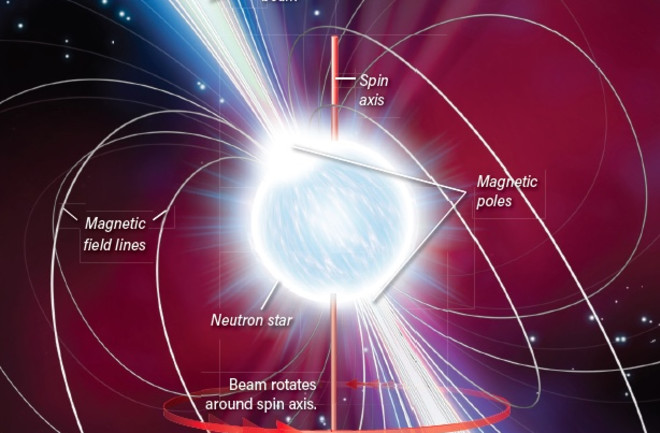The universe is full of weird objects, but pulsars take the prize as the strangest things scientists can study directly. The shriveled remains of once-mighty stars, they’re around a dozen miles across, have approximately the mass of a sun and can spin hundreds of times per second. They’re also made of a poorly understood particle soup for which researchers don’t have the recipe.
Here’s what we do know: Pulsars are a type of neutron star, the dense core left over after a supernova — a stellar explosion. Astronomers can see pulsars only because electromagnetic radiation, especially radio waves, streams from their magnetic poles. As the pulsars spin, these streams point, once per go-around, at Earth. They sweep over our planet like transient lighthouse beams, and telescopes pick up each one as a pulse.
The First Pulsar
As part of her doctoral work in radio astronomy, Jocelyn Bell Burnell built a radio telescope by hand — pounding posts, stringing wire, attaching metal. Once it was ready, she was in charge of using it to survey the sky for what astronomers call “scintillating sources” — the radio equivalent of twinkling lights — in a search for special galaxies far, far away. But on Nov. 28, 1967, she discovered something unexpected: a recurring source of radio waves that appeared and disappeared like cosmic clockwork. At first, she called it “scruff.” Then she and her adviser jokingly named it LGM-1, for “little green men.” Today, we call it a pulsar.

